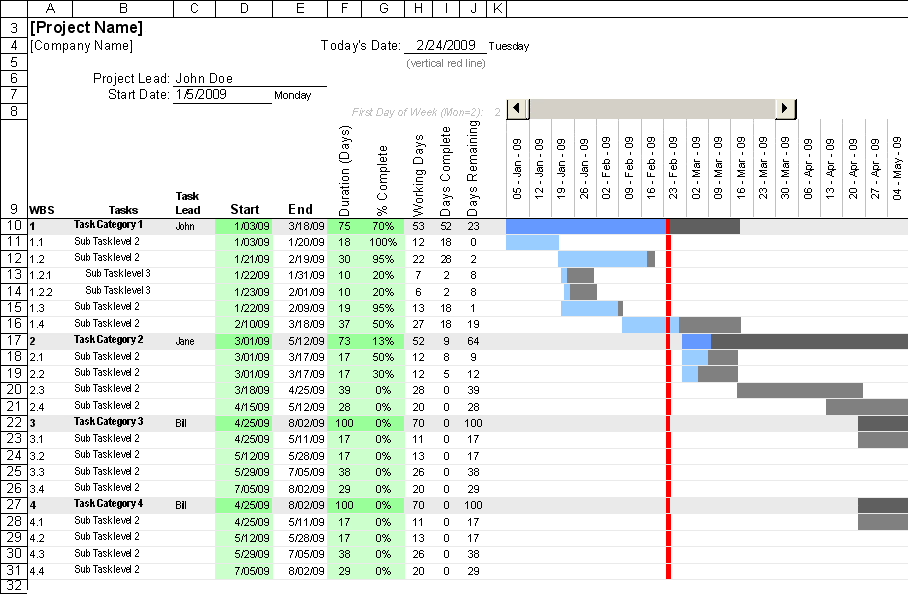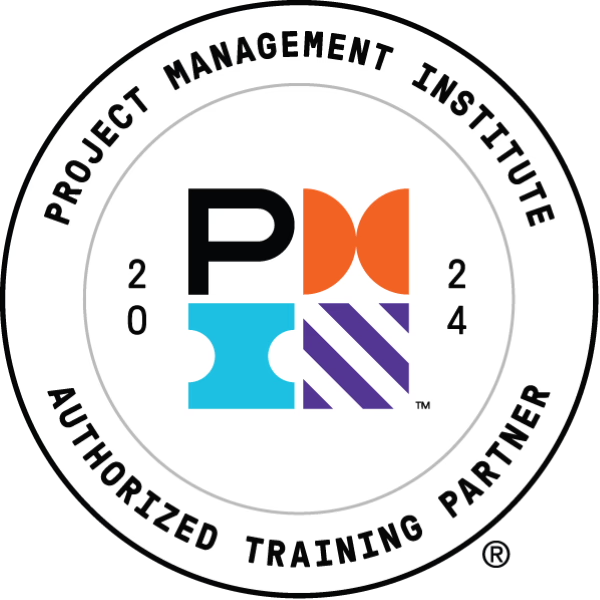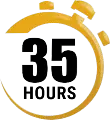What is a Project Management Plan in Project Management (PMP)? Defination, Importance, Purpose, Components, Creation & Sample Example

Yad Senapathy, PMP January 17, 2023
Have you ever been a part of a project that is taking longer than expected? If that is the case, then it means you need a clear plan in place. It is important to have a project management plan that will guide the team from start to finish. A project plan is like a roadmap that helps the project managers to keep the project stay on track and stops the budget from spiraling out of control.
To tell you more about a project management plan and how you can create a solid one, Project Management Training Institute has shared a comprehensive guide to ensure that the project meets its desired objectives.
Table of Contents
- What is a Project Management Plan?
- Project Management Plan Components
- Project Scope
- Project Schedule
- Project Budget
- Project Risks
- Quality Management Plan
- Communication Plan
- Resource Management Plan
- Things You Need to Know Before Creating a Project Plan
- Creating a Project Management Plan
- Importance of Project Management Plan
- Sample Project Management Plan
What is a Project Management Plan?
A project management plan is a document showing how a project will be executed and monitored. All things like resources, budget, schedule, etc., are mentioned in the plan, which helps the stakeholders understand the project's goals and deliverables. This project management plan also ensures that a project is completed within the budget and on time.
The primary purpose of creating a project management plan is to define how the project will be managed and delivered. It outlines the project and how it will be completed while meeting the required quality standards.
Project Management Plan Components
Following are some of the main components of the project management plan.
- Project scope
- Project schedule
- Project budget
- Project risks
- Quality management plan
- Communications management plan
- Resource management plan
- Project changes
Project Scope
The scope is quite an important section in the plan as it defines the project's objectives and tells the project managers what is included. By defining the project's scope, the project managers can stop the project from drifting away from the project's original objectives.
The project scope must clearly define the project's deliverables and any constraints that can impact the project. It would be best to define the project's scope at the start, as it can help the project stay on track and within budget.
Project Schedule
This section provides the project's timeline, like when the project will start and when it will be completed. This section should be detailed as you want to clearly understand the tasks and activities that must be completed within the given timeframe. However, the project schedule should be flexible, allowing the project managers to adjust according to the projects' needs. Keep in mind that the project schedule should be reviewed regularly as you want to ensure that the project stays on track.
Project Budget
This section describes the resources needed for the project, such as personnel, materials, and equipment. It also includes a budget for each resource and any contingency resources required to address any unanticipated challenges that develop throughout the project.
The project budget must be managed effectively to make sure the project stays within the budget. It may involve evaluating the budget regularly, making necessary changes, and seeking extra funds.
Project Risks
This part evaluates and analyzes potential risks to the project and offers a strategy for dealing with these risks. Adjustments in project scope, budget, timeline, and technical issues are all considered risks. Identifying risks early in the project can keep them from becoming serious concerns afterward.
A strategy for risk management should include risk-mitigation methods and emergency plans for dealing with them if they materialize.
Quality Management Plan
This section lists the quality standards that will be applied to ensure the project is completed to specified requirements. It may include information on how quality will be assessed and evaluated and who will ensure that quality requirements are met.
A quality management plan should include a procedure for detecting and correcting any issues that may influence project quality and a system for evaluating and monitoring project quality throughout its lifecycle.
Communication Plan
This section describes how communication would be managed throughout the project, particularly who will be in charge of communication, what data will be provided, and how.
Effective communication is critical for the success of any project because it keeps all stakeholders and team members informed and up to speed on the project's status.
A communication plan should contain internal and external tactics and a mechanism for documenting and assessing critical information.
Resource Management Plan
This section explains how the project team and other resources will be handled, including how team members will be recruited, trained, and assessed.
Proper resource management is crucial for project success because it assures that the project has the resources it needs to accomplish its goals and objectives. A resource management strategy should include techniques for successful resource allocation and utilization and a system for monitoring and assessing resource usage across the project.
Project Changes
This section describes how changes that are made will be handled, along with how changes will be evaluated and executed. Changes to the project can have a major impact on its scope, schedule, and budget, so it is essential to have an effective mechanism to manage them.
Things You Need to Know Before Creating a Project Plan
Before writing any plan, you must take a few minutes to prepare and ensure you have all the necessary information and resources about the following items:
- Assess the Risk of Failure
- Identify Milestones for Success
- Select Key Talent for the Project
- Choose Tools for Planning and Execution
- Understand the Needs of the End Beneficiary
Assessing the Risk of Failure
Determining the potential consequences of a project not being completed successfully can guide the motivation of the execution team and the development of the project's value proposition. This perspective also highlights the importance of each stakeholder's role in the project.
Identifying Milestones for Success
For a project to be successful, you have to define the specific goals that need to be achieved. To achieve it, you must select team members with the necessary expertise. Once the milestones have been identified, the required skills and expertise can be identified, followed by selecting team members who possess those skills.
Selecting Key Talent for the Project
It is important to gather expertise from the team members responsible for executing the plan. Identifying these stakeholders early on allows for their involvement and input throughout the planning process.
Choosing Tools for Planning and Execution
Charts, graphics, and reports will be necessary for recording and organizing information during the planning process. Tools like Canva for graphic design and project management software such as monday.com or Wrike can be useful.
Understanding the Needs of the End Users
Knowing what the end-user or beneficiary of the project desires in the final deliverable is crucial for success. Listening to the user's needs and expectations for the project is important before beginning the planning process. This understanding can help create a project that will have a positive impact.
Creating a Project Management Plan
Before creating a project plan, you should clearly understand all the components of a project management plan, such as project scope, budget, schedule, risk etc. The Project Management Institute's Project Management Body of Knowledge Guide recommends the following strategies for your project management plan:
- Plan for scope management
- Plan for the management of requirements
- A strategy for time management
- A cost-cutting strategy
- Plan for quality control
- A strategy for managing resources
- A strategy for managing communications
- A strategy for risk management
- The procurement strategy
- Stakeholder outreach strategy
While the PMBOK suggests implementing these ten strategies as a baseline, you may discover that various projects need different methods. These areas should be covered at some point in your project management planning, even if they must be comprehensively documented.
The following steps can be useful in creating a project management plan.
Create a Template for Project Planning
When creating a project management plan, using existing resources as a reference can be helpful. These resources could include project plan examples or templates, which can guide what to include in the plan and how to structure it. Utilizing these resources can save time and ensure that important details are noticed.
Additionally, your company may have a repository of resources that can be used to help develop the project management plan. These could include a high-level template for planning projects, a project planning worksheet, or model plans. These resources can provide a starting point and help ensure the plan is consistent with the company's standards. Another helpful resource that may be available is a calendar specifically for preparing projects. This calendar can be used to schedule important tasks and deadlines, helping ensure the project stays on track.
Define the Project Objective
Project objectives are nothing but a more detailed version of the goal statements. The purpose of objective statements is to clarify the boundaries of the goal statement in terms of scope, cost, and timeline.
A good exercise to test the validity of the objective statements is to ask if it is clear what is in and is not in the project. Statements of objectives should specify a future state rather than be activity based. We like to think of them as statements that clarify the goal by providing details about the goal. Think of them as subgoals; you will be close to the mark.
An objective statement should contain four parts:
An outcome - A statement of what is to be accomplished
A time frame - The expected completion date
A measure - Metrics that will measure success
An action - How will the objective be met
Defining Project Timelines
A Gantt chart is one effective way to plot your project's timeline. This visual tool lets you see the planned start and end dates for each activity or milestone in your project. By breaking the project down into smaller parts, you can easily manage the project's scope and avoid scope creep.
It is important to consider dependencies when creating your Gantt chart. A dependency occurs when one activity must be completed before the next one can begin. For example, a prototype must be completed before a focus group can analyze it. You can use color coding or arrows to indicate dependencies on your Gantt chart. Independent activities, which can be completed concurrently with other tasks, should also be noted as they can help save time.
Various platforms specialize in creating Gantt charts, such as specialized software or tools like Excel or Google Sheets. These tools can help you create the chart but also assist in tracking the timeline and avoiding scope creep through task descriptions and automation. If your budget does not allow for a paid service, you can use a tool like Canva to create a Gantt chart.
Identify All Stakeholders
Once you have developed a basic outline for your project, it is important to identify the key stakeholders who will be involved in the project and gather their requirements. Stakeholders are individuals or groups with major stakes in the project's success or outcome. These may include project team members, customers, vendors, and upper management. Collecting the requirements of these stakeholders is crucial as it helps to ensure that the project meets their needs and expectations. Engaging in open and effective communication with each stakeholder is important to collect requirements. It involves holding meetings or conducting interviews to gather their input and feedback. After gathering the requirements of each stakeholder, the next step is to define the project's scope. It involves outlining the specific tasks and deliverables required to meet their needs. You should be as specific as possible in defining the scope, as this will help to prevent scope creep, which is when the project expands beyond its original scope.
Develop a Quality Management Plan
A quality management plan outlines the specific quality standards and criteria that will be used to ensure that the project meets the required level of quality. It may include details on how quality will be tested and measured and who will ensure the quality standards are met. A quality management plan is critical for ensuring that the project delivers high-quality products or services and that all team members work towards the same quality goals. When developing a quality management plan, it is important to involve all relevant stakeholders and consider the end-users or customers' needs and expectations.
Create a Communications Management Plan
A communication plan outlines how communication will be managed throughout the project, including who will be responsible for communication, what information will be communicated, and how it will be communicated.
Effective communication is critical for ensuring that all team members are informed and aligned and that any issues or concerns are addressed in a timely manner. A communication plan helps to ensure that all stakeholders are kept informed of the project's progress and that any changes or updates are communicated.
Identify and Assess Risks
A thorough risk assessment is essential to ensure your project is successful. It involves identifying potential obstacles that could negatively impact the project and developing a plan to mitigate those risks.
To begin, create a list of all potential risks that could affect the project. Consider factors such as timelines, quality, and team ability. Use a SWOT analysis to help you identify strengths, weaknesses, opportunities, and threats.
Next, for each risk, consider the following:
- What could happen that would negatively impact the project?
- At what point in the project timeline is this risk most likely to occur?
- How likely is the risk to happen?
- What steps can be taken to reduce the chances of this risk-taking place? How can we avoid the triggers?
- Who would be the best person to manage each risk's triggers, prevention, or mitigation?
As you assign responsible parties for each project activity, select team members with the necessary expertise. For example, if you assign a graphic design task to a team member, that person should have a strong background in graphic design. Utilize your team's expertise to assess risks and develop prevention and mitigation strategies. By taking the time to assess and address potential risks thoroughly, you can increase the chances of project success.
Getting Feedback
A plan created in isolation is less likely to gain the necessary support when the time comes. Including stakeholders in the project planning process makes them feel more invested in the project and sets the stage for a collaborative team atmosphere that will benefit the project. Obtain feedback from key stakeholders when developing a project plan through a planning meeting, brainstorming session, or one-on-one interview. It is also a great opportunity to continue building relationships with key stakeholders established during the stakeholder analysis and project charter process.
Importance of Project Management Plan
Project management planning is important for several reasons:
- It helps define the scope and objectives of the project: By creating a project management plan, you can clearly define the goals, objectives, and deliverables of the project. It also helps ensure that everyone involved in the project is working towards the same goals and clearly understands what needs to be achieved.
- It helps allocate resources effectively: A project management plan outlines the resources (e.g., personnel, equipment, materials) needed to complete the project and helps ensure that these resources are allocated effectively. It also helps ensure that the project stays on budget and is completed on time.
- It helps identify potential risks and issues: By creating a project management plan, you can identify potential risks and issues that may arise during the project and develop contingency plans to address them. Identifying risks helps reduce the likelihood of delays or setbacks and ensures that the project stays on track.
- It helps improve communication and collaboration: A project management plan helps ensure that all stakeholders are aware of the project's goals and progress and can help facilitate better communication and collaboration between team members.
Benefits of a Project Management Plan
The following are the benefits of having a Project Management Plan:
- A project management plan helps to ensure that the project is completed within time and budget by providing a clear roadmap for the project team to follow.
- A project management plan serves as a communication tool, providing stakeholders with a clear understanding of the project's objectives and deliverables.
- By involving stakeholders in the creation of the project management plan, you can increase buy-in and support for the project.
- A project management plan helps to identify and assess potential risks and provides a plan for mitigating these risks.
- A project management plan includes a quality management plan, which helps to ensure that the project meets the required quality standards.
Uses of Project Management Plan
A project management plan is used for several purposes, which are as follows:
- The project management plan helps to clearly define the project and its goals, objectives, and deliverables. It helps to ensure that everyone involved in the project is working towards the same goals.
- The project management plan includes a schedule outlining the key tasks and milestones that should be completed.
- The project management plan includes a resource plan that outlines the staff, equipment, and materials needed to complete the project. A resource management plan helps to ensure that the project team has the resources they need to do their work effectively.
- The project management plan includes a budget plan outlining the project's costs. It helps to ensure that the project stays within budget and is within its allocated funds.
- The project management plan includes a risk management plan that outlines the potential risks that could impact the project and how they will be mitigated. A risk management plan helps ensure the project is completed successfully despite unforeseen challenges.
- The project management plan includes a communication plan that outlines how the information will be shared among project team members and stakeholders. A stakeholder management plan helps keep everyone informed about the project's progress.

Sample Project Management Plan
For your convenience, we have shared a sample project management plan that can be modified and adapted to fit the needs of a specific project.
Project Title: Mobile App Development
Project Overview
Purpose: To develop a new mobile app to improve the company's online presence and attract new customers.
Scope: The project will include designing and developing a new app.
Project Objectives
- Launch the new mobile application within six months
- Increase app downloads on both Android and iOS by 25% within the first year
- Improve user experience and engagement with the new mobile app.
Stakeholders
- Company management
- Application development team
- Marketing team
- Customers
Project Organization
- Project Manager
- App Development Team:
- Lead Developer
- Designer
- Copywriter
Governance and Decision-Making
Decisions will be made through consultation with the project manager and relevant team members. Major decisions will be presented to the management team for approval.
Project Schedule
Milestones:- App design and layout complete: 2 months
- Application development complete: 4 months
- Content creation: 5 months
- Launch of Application: 6 months
Project Budget
Total Funds: $35,000
Budget Breakdown:
App design and development: $20,000
Content creation: $5,000
Ongoing maintenance and updates: $2,000/year
Project Risks
Risk 1: Delay in mobile app development due to unexpected technical issues
Risk 2: Unforeseen increase in project scope
Risk Mitigation
Risk 1: Regular progress updates and testing to identify and resolve technical issues quickly
Risk 2: Use of a scope change management process to carefully evaluate and prioritize new requests for changes to the project scope
Project Communications
Communication Method: Email, phone, in-person meetings
Frequency: Weekly team meetings, monthly progress updates to management
Project Quality
Quality Standards: The application will meet industry best practices for usability, accessibility, and security.
Quality Assurance Plan: Regular testing and user feedback will be solicited during the development process to ensure the app meets the quality standards.
Project Changes
Change Request Process: Any requests for changes to the project scope, schedule, or budget must be submitted in writing and approved by the project manager and relevant team members. Major changes will also require approval from the management team.
Project Closeout
Deliverables: The completed mobile app for Android and iOS and all project documents will be delivered to the management team.
Review and Evaluation: The project team will review the project's successes and challenges and make recommendations for future improvements.
Summary
To sum it up, a project management plan is important for any project team as it helps define the project's scope, timeline, and budget and identify and assess potential risks. It is important to involve stakeholders and use relevant resources when creating a project management plan. You want to avoid project derailment and a project that provides no value to the end user.
You need to create a comprehensive and effective project management plan that ensures that your project stays on track and helps you analyze the project's success.
Article by

Yad is not just the leader of the Project Management Training Institute (PMTI). He helped to write significant portions of the project management standards worldwide. He is helping PMI right now in reviewing, directing, and leading the development of the 7th edition of the PMBOK® Guide to incorporate the most monumental changes to project management standards in 35 years. He shares his wisdom with readers via the PMTI blog.


 Leaders in PM industry for 20+ years
Leaders in PM industry for 20+ years Verified PMI Authorized Training Partner
Verified PMI Authorized Training Partner Pioneers of 100% pass guarantee
Pioneers of 100% pass guarantee
 Authorize.Net trusted transactions
Authorize.Net trusted transactions Satisfies 35 contact hours
Satisfies 35 contact hours




